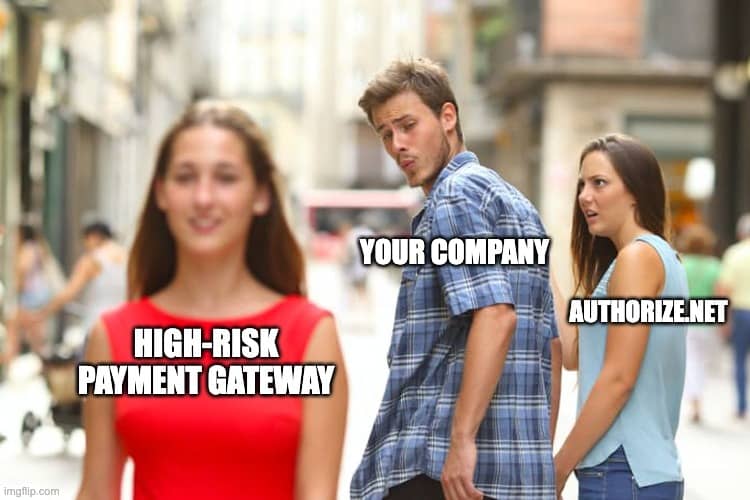Is Your Billing Descriptor Causing Chargebacks?

A customer’s credit card bank statement should provide clear and concise information. The descriptor you use to identify a charge is important because a consumer can’t always connect a purchase with the line item on his credit card statement. A poor billing descriptor that isn’t easy to read will increase the likelihood of customers not recognizing legitimate authorized transactions, which can result in the customer initiating a chargeback. An optimized billing descriptor is one of the strongest lines of defense against customers initiating chargebacks on legitimate transactions and is particularly of benefit to a high risk merchant account.
What is a Billing Descriptor?
A billing descriptor is simply an explanation of a transaction. It is a brief description meant to serve as a reminder of what was purchased. A billing descriptor is limited to between 20 and 25 characters, and the merchant’s phone number or address normally appears at the end of the descriptor. The merchant’s name, along with the date of the transaction, are included as well. To ensure accurate representation and clear communication, a merchant should take advantage of the full-length character allowance.
Two Types of Billing Descriptors
- Default: Merchant’s name that appears on every transaction in the same format. This type of descriptor is normally used when a company offers only one product or type of service. It is accompanied by the final price for the goods or services purchased.
- Dynamic: Customizable descriptor that allows you to modify each transaction description to ensure accurate representation of each purchased product or service. This is normally used when a company offers multiple products or services.
Why Do Billing Descriptors Matter?
If a customer receives a billing statement that does not accurately reflect your business or the product or services rendered, it is likely to raise a red flag with the customer. Far too often what happens next is a series of events that were easily preventable if a merchant simply used a billing descriptor that contained accurate information.
When a chargeback is initiated, the consumer is essentially asking the bank to forcibly take money out of the merchant’s account. Chargebacks are one of the most frustrating aspects of running a business, and they ultimately cost a merchant money, time, and effort. Once a chargeback is initiated, it is the merchant’s responsibility to provide documentation or further details to prove the purchase was valid. Proof of validity may include documents, such as sales or delivery receipts or shipping invoices. Merchants can reduce the number of chargebacks by optimizing the billing descriptor to ensure transactions are in a clear and easy-to-understand format on bank billing statements.
How to Optimize Your Billing Descriptor
Understanding your customer’s perspective can help you optimize your billing descriptor. Remember the main goal of the descriptor is to help the customer identify the transaction. Since customers are trained to be cautious of online fraud, let’s take a look at a few ways you can optimize your billing descriptor so excessive chargebacks do not negatively impact your business.
1. Simplify Descriptors
To reduce the chances of confusion. it is best to use a descriptor that gently reminds customers of the transaction. A brief, simple description of the product or service purchased and the name of your website domain are usually enough to jog a customer’s memory.
2. Use Your Trade Name
It is not uncommon for businesses to operate under a trade name rather than their legal name or parent company name. If your business uses a trade name, it should be displayed throughout your website to familiarize your online visitors with your trade name. Always use your trade name in the billing descriptor to help customers easily recognize at first glance whom the transaction took place with.
3. Include Your Phone Number
It is good practice to include your phone number in the second part of the descriptor. This increases the likelihood of customers reaching out to you with questions before reporting a chargeback. Since a merchant’s phone number is not included in the 20-25 character limit, merchants should make it easily accessible on the billing statement and respond to customers’ concerns immediately to reduce chargebacks.
4. Use Test Transactions
Before your company starts operations, send out a few test transactions to ensure your descriptor is optimized and formatted correctly. You can do this through different issuing banks. This will give you an idea of how the descriptor will appear to customers. If it doesn’t immediately and easily identify your business, you will need to make tweaks to the descriptor.
The bulk of customer disputes that merchants see come from no authorization chargebacks. Unfortunately, the majority of these are the result of the customer simply not recognizing the transaction on their billing statement. Contact BankCard Services to reduce your chargeback ratio with fraud prevention tools, chargeback mitigation tools, and PCI compliance.
Read Next

Find out whether Authorize.Net works for high risk merchants, what restrictions you might face and how to get approved.

Get expert advice on selling CBD products on Shopify, including compliance tips and setting up secure payment options.

Find out why Square may deactivate merchant accounts and steps to resolve issues and maintain uninterrupted payment services.
Need a High-Risk Merchant Account?
Disruption-free payment processing at the best price for your situation, guaranteed.
Get Free Guidance Now!